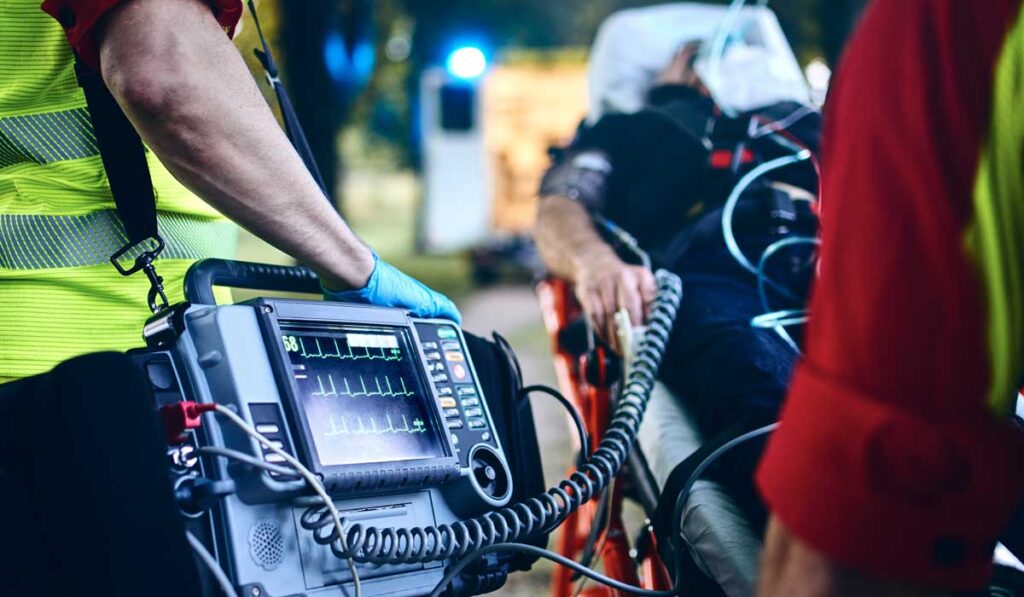Physicians understand that not all heart attacks are the same and have tools to detect and diagnose heart damage. However, during an acute heart attack, they still lack means of determining the exact cause of the damage.
“Treatment often precedes definitive diagnosis of the cause of the heart attack,” said Andrew DeFilippis, M.D., medical director of the cardiovascular ICU at Vanderbilt University Medical Center. Knowing the cause of a patient’s heart attack is essential; yet, non-invasive tools to determine the cause are limited. “As groundbreaking as the troponin test was, the fact is that we are often still left diagnosing the cause of our patients’ dead heart muscle to circumstantial evidence,” he said.
To address this gap, DeFilippis is analyzing a cohort of patients with different types of acute heart attack. He then plans to leverage this data to develop a rapid blood test that will help physicians pinpoint the immediate cause of the patient’s heart damage. “With advancements in mass spectrometry, for the first time we are able to identify biomarkers that differentiate between different types of heart attacks,” he said.
Overreliance on Troponin
“We bank everything on the presence of a single protein – troponin,” DeFilippis said. These tests are increasing in sensitivity, helping to detect heart attacks quickly. However, high troponin levels are not exclusive to heart attacks and, he explains, may even point to other heart conditions and illnesses. As a result, clot-busting drugs and anticoagulants, which carry bleeding risks, can be inappropriately given to patients with heart damage from a type 2 heart attack, for example.
“As groundbreaking as the troponin test was, the fact is we are often still left diagnosing the cause of our patients’ dead heart muscle based on circumstantial evidence.”
Financially, the impact of reliance on troponin and failures in differentiating cardiac events is extraordinary. Typically, hospitals err on the side of caution, admitting patients who have chest pain overnight. Add imaging, angiography or catheterization, and the costs of assuring that a nascent heart attack is not overlooked mount precipitously.
Comparing Biological Fingerprints to Identify Biomarkers
DeFilippis is working to identify biomarkers to help diagnose different types of heart attacks. Using mass spectrometry, he is teasing apart patterns of biomolecules found in the blood of patients at the time of their heart attacks and after recovery. By identifying what is uniquely present in the blood at the time of the patient’s heart attack, he hopes to pinpoint biochemical patterns specific to individual types of heart attacks.
“Our data include individual and sophisticated combinations of potential biomarkers, including thousands of proteins, metabolites and lipids,” DeFilippis said. “This analysis will produce a fingerprint for each patient – a biological signature of what is going on at a particular time. If we start seeing fingerprints that share a lot of the same patterns, we have the beginnings of a diagnostic tool.”
The MESA Study
DeFilippis is also seeking to identify risk factors that predispose patients to different types of heart attacks by using existing prospective data from the NIH Multi-Ethnic Study of Atherosclerosis (MESA), a longitudinal study of over 6,800 participants. The MESA data is extensive and includes cardiac CT scans and whole genome sequencing on all participants. None of the MESA participants had signs of cardiovascular disease at enrollment.
Retrospectively, DeFilippis is re-reviewing all cardiovascular events detected in the MESA study, diagnosing them with today’s definition of heart attack, and separating the different types of heart attacks. “This will help us identify the risk factors for each type of heart attack and look for new risk factors specific to each one,” DeFilippis said.
“If we start seeing fingerprints that share a lot of the same patterns, we have the beginnings of a diagnostic tool.”
Rewriting the Book on Risk Factors
Different heart attack types are etiologically distinct, so it follows that the risk factors will be distinct as well. “When people refer to high blood pressure or high cholesterol as risk factors for heart attacks, the question is ‘Which one?’” DeFilippis said.
For the first time DeFilippis believes researchers will be able to answer that question, rewriting the book on risk factors. Further, he says, a greater understanding of what factors result in specific types of heart attacks will enable profiling to help determine an individual patient’s risk for each specific type of acute heart attack. “This is the first step in providing precision medicine to these patients,” he said.





